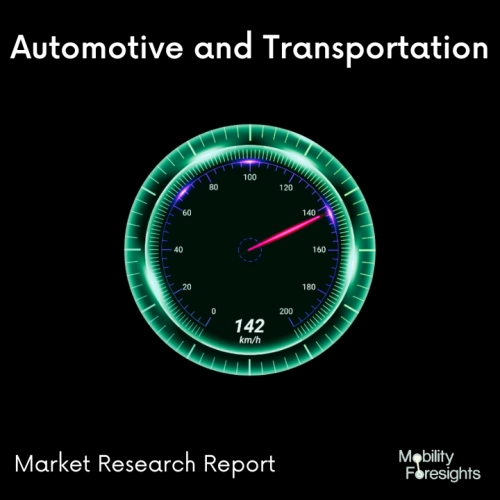
- Get in Touch with Us

Last Updated: Apr 25, 2025 | Study Period: 2023-2030
Regenerative suspension is a cutting-edge technology that is revolutionizing the electric vehicle industry. It works by using the energy generated by the suspension system to charge the battery, thus allowing for greater range and efficiency.
Regenerative suspension works by capturing the energy created when the car is driven over bumps or uneven terrain and storing it in the carâs battery. This energy is then used to power the carâs other systems, such as the air conditioning, radio, and headlights.
This technology is becoming increasingly popular in electric vehicles due to its ability to increase the range of their batteries.
Additionally, regenerative suspension is also more efficient than traditional suspension systems, as it is able to store and reuse the energy generated from bumps and uneven terrain. This leads to lower maintenance costs and improved performance.
Regenerative suspension systems are also able to improve the overall comfort level of electric vehicles. By capturing and recycling the energy generated from bumps and uneven terrain, regenerative suspension is able to provide a smoother ride, while still providing the necessary stability and handling.
Overall, regenerative suspension is an innovative technology that is revolutionizing the electric vehicle industry. By allowing for greater range and efficiency, as well as improved comfort and performance, regenerative suspension is becoming the preferred choice for many electric vehicle owners.

The Global EV regenerative suspension market accounted for $XX Billion in 2022 and is anticipated to reach $XX Billion by 2030, registering a CAGR of XX% from 2023 to 2030.
BMW creates an EV suspension technology that converts uneven roads into useful energy. According to a recent patent submitted to the German Patent Office, BMW is developing a new suspension system that can capture energy from the wheel movement of an electric vehicle while it absorbs bump stress.
Automobile manufacturers are racing to find ways to increase the range of electric cars (EVs) as the industry increasingly shifts to entirely electric vehicles. With the rapid advancement of battery technology, the electric vehicle range is now comparable to that of gas-powered vehicles.
But BMW intends to go one step further. In order to produce useful energy, BMW is revamping the suspension, which often loses energy to sustain wheel movement.
In response to driving over a bump, the wheel moves and generates energy, which is captured by an inventive design shown in the file. In order to charge the EV battery, the stored energy is subsequently directed to a generating unit.
While some manufacturers are working on ways to harvest energy while traveling, others have created energy-saving features that can extend the range of electric vehicles. However, it's brilliant how to use the energy from road imperfections to replenish the battery. BMW's new suspension system will be seen as a luxury feature even if it probably won't improve acceleration.
The Regenerative EV Braking System Enhances the Range and Efficiency of Trucks. Tevva, a British electric truck company, has successfully developed a new regenerative braking system for their 7.5t battery-electric vehicle in partnership with ZF, a Tier 1 automotive supplier.
Electric truck maker Tevva has finished developing a new regenerative braking system with the help of Tier 1 automotive supplier ZF's electronic braking system (EBS).
Tevva claims that the braking technology preserves battery capacity and increases the range of its electric 7.5-ton trucks by capturing four times as much energy as conventional compressed air braking systems.
In order to safely slow down the car and lessen wear and tear on the mechanical brakes, the regenerative system cleverly integrates conventional friction braking with the electric motor. It also returns excess energy to the car's battery.
| Sl no | Topic |
| 1 | Market Segmentation |
| 2 | Scope of the report |
| 3 | Abbreviations |
| 4 | Research Methodology |
| 5 | Executive Summary |
| 6 | Introdauction |
| 7 | Insights from Industry stakeholders |
| 8 | Cost breakdown of Product by sub-components and average profit margin |
| 9 | Disruptive innovation in theIndustry |
| 10 | Technology trends in the Industry |
| 11 | Consumer trends in the industry |
| 12 | Recent Production Milestones |
| 13 | Component Manufacturing in US, EU and China |
| 14 | COVID-19 impact on overall market |
| 15 | COVID-19 impact on Production of components |
| 16 | COVID-19 impact on Point of sale |
| 17 | Market Segmentation, Dynamics and Forecast by Geography, 2023-2030 |
| 18 | Market Segmentation, Dynamics and Forecast by Product Type, 2023-2030 |
| 19 | Market Segmentation, Dynamics and Forecast by Application, 2023-2030 |
| 20 | Market Segmentation, Dynamics and Forecast by End use, 2023-2030 |
| 21 | Product installation rate by OEM, 2023 |
| 22 | Incline/Decline in Average B-2-B selling price in past 5 years |
| 23 | Competition from substitute products |
| 24 | Gross margin and average profitability of suppliers |
| 25 | New product development in past 12 months |
| 26 | M&A in past 12 months |
| 27 | Growth strategy of leading players |
| 28 | Market share of vendors, 2023 |
| 29 | Company Profiles |
| 30 | Unmet needs and opportunity for new suppliers |
| 31 | Conclusion |
| 32 | Appendix |